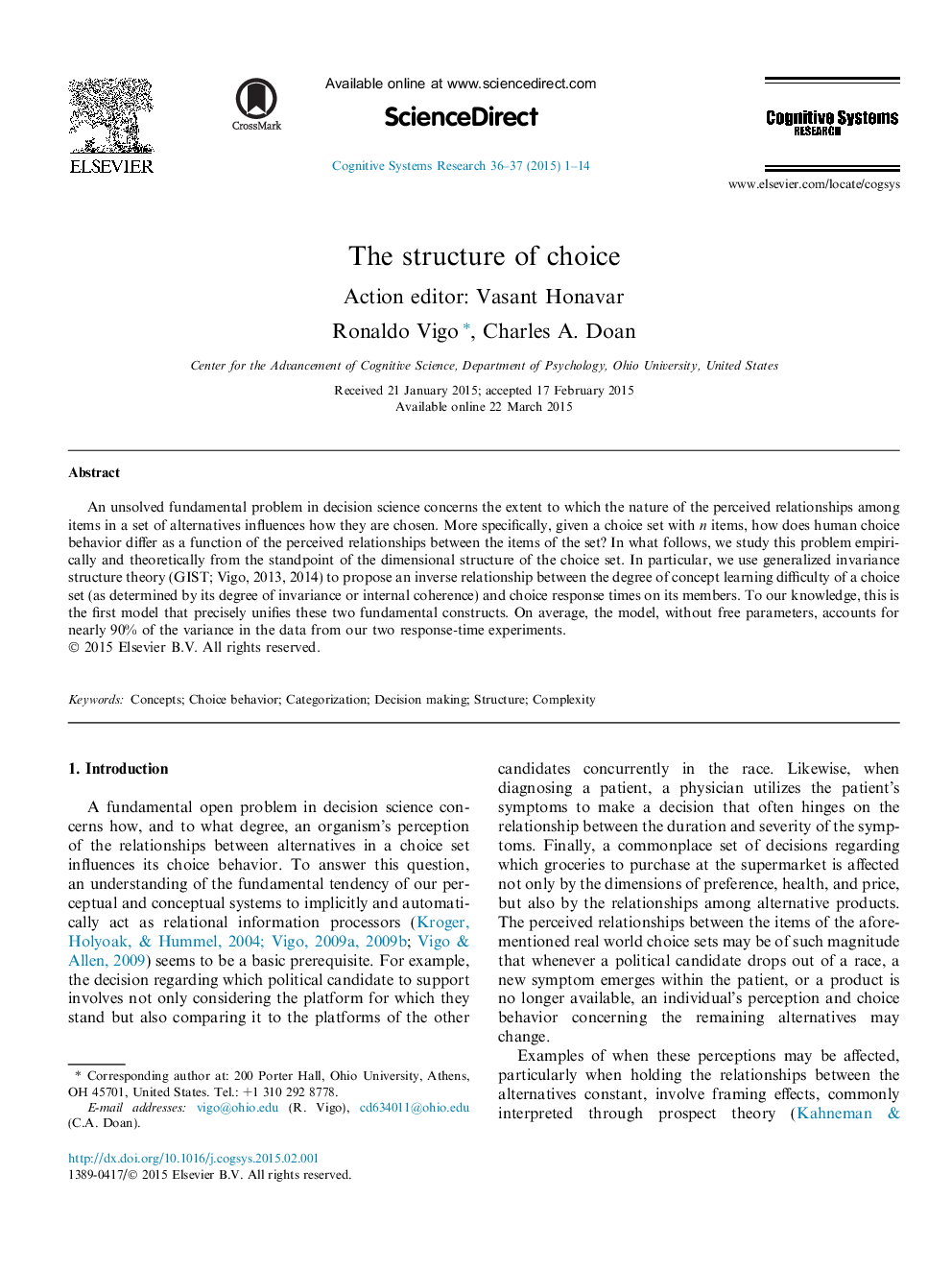| Article ID | Journal | Published Year | Pages | File Type |
|---|---|---|---|---|
| 378374 | Cognitive Systems Research | 2015 | 14 Pages |
An unsolved fundamental problem in decision science concerns the extent to which the nature of the perceived relationships among items in a set of alternatives influences how they are chosen. More specifically, given a choice set with n items, how does human choice behavior differ as a function of the perceived relationships between the items of the set? In what follows, we study this problem empirically and theoretically from the standpoint of the dimensional structure of the choice set. In particular, we use generalized invariance structure theory (GIST; Vigo, 2013, 2014) to propose an inverse relationship between the degree of concept learning difficulty of a choice set (as determined by its degree of invariance or internal coherence) and choice response times on its members. To our knowledge, this is the first model that precisely unifies these two fundamental constructs. On average, the model, without free parameters, accounts for nearly 90% of the variance in the data from our two response-time experiments.
